Introduction
Mango bingsu was the first dessert that truly stopped me in my tracks on a hot, sticky afternoon in Seoul. I’d just wandered out of a street market tucked between Myeongdong’s neon chaos when I stepped into a quiet café and saw this golden, snow-like tower topped with glistening mango cubes. I didn’t know it then, but I’d stumbled upon a dessert that would reshape my idea of what a frozen treat could be.
In this article, I’m diving deep into the world of mango bingsu—a sweet, icy Korean dessert that’s become a global sensation. We’ll explore how it’s made, why it’s so different from Western ice creams or sorbets, its cultural roots, and even how to make it at home. I’ll also share where to find the best mango bingsu, how many calories are packed into each bowl, and whether this vibrant dessert leans Korean or Japanese in origin. Whether you’re a curious foodie, a lover of tropical fruits, or just searching for your next summer obsession, this guide will bring you everything you need to fall in love with mango bingsu.
Check out my go-to page for creative desserts: recipes
Now let’s kick things off with how mango bingsu went from a niche Korean street snack to a global summertime favorite.
Table of Contents
The Irresistible Rise of Mango Bingsu
What Is Mango Bingsu and Why Everyone’s Obsessed
Mango bingsu is a luxurious twist on bingsu, Korea’s iconic shaved ice dessert. Unlike snow cones or sorbets, this isn’t just ice with syrup. It’s ultra-fine milk-based ice shavings, piled high like powdery snow, and topped with juicy mango chunks, condensed milk, mango syrup, and sometimes even a scoop of mango ice cream. It’s cold, rich, creamy, and fruity all in one bite—basically summer in a bowl.
What sets mango bingsu apart is how refreshingly light yet indulgent it feels. The combination of sweet mangoes and soft, snowy ice doesn’t weigh you down. That makes it perfect for hot days when you still crave something decadent. Plus, mango’s bright color makes it a total showstopper on social media, helping it go viral around the world.
How I First Discovered Mango Bingsu in Seoul’s Street Cafes
My first encounter was a happy accident. I was sweaty, jet-lagged, and desperate for something to cool me down. I wandered into a tiny café playing soft K-pop, and the chalkboard menu simply read: “망고빙수 – Mango Bingsu.” I pointed, ordered, and soon was staring at a cloud of frozen milk, draped in mango slices. The first spoonful was magic.
That experience turned into a summer ritual. Every time I visit Korea now, I hunt down local bingsu cafés—each offering their own take on the classic. Some add sticky rice balls, others drizzle in mango puree made in-house. And now, I’m on a mission to recreate and share this tropical joy with you.
In the next section, we’ll break down what exactly goes into mango bingsu and why its ingredients make it so special compared to other frozen treats.
The Magic Ingredients Behind Mango Bingsu
Traditional and Modern Ingredients in Mango Bingsu
At its heart, mango bingsu is made from just a few components—but when combined, they create a dessert far greater than the sum of its parts. The base is shaved milk ice (often made from frozen condensed milk or milk blended with cream), which has a soft, powdery texture closer to fresh snow than crushed ice. This is where the magic starts.
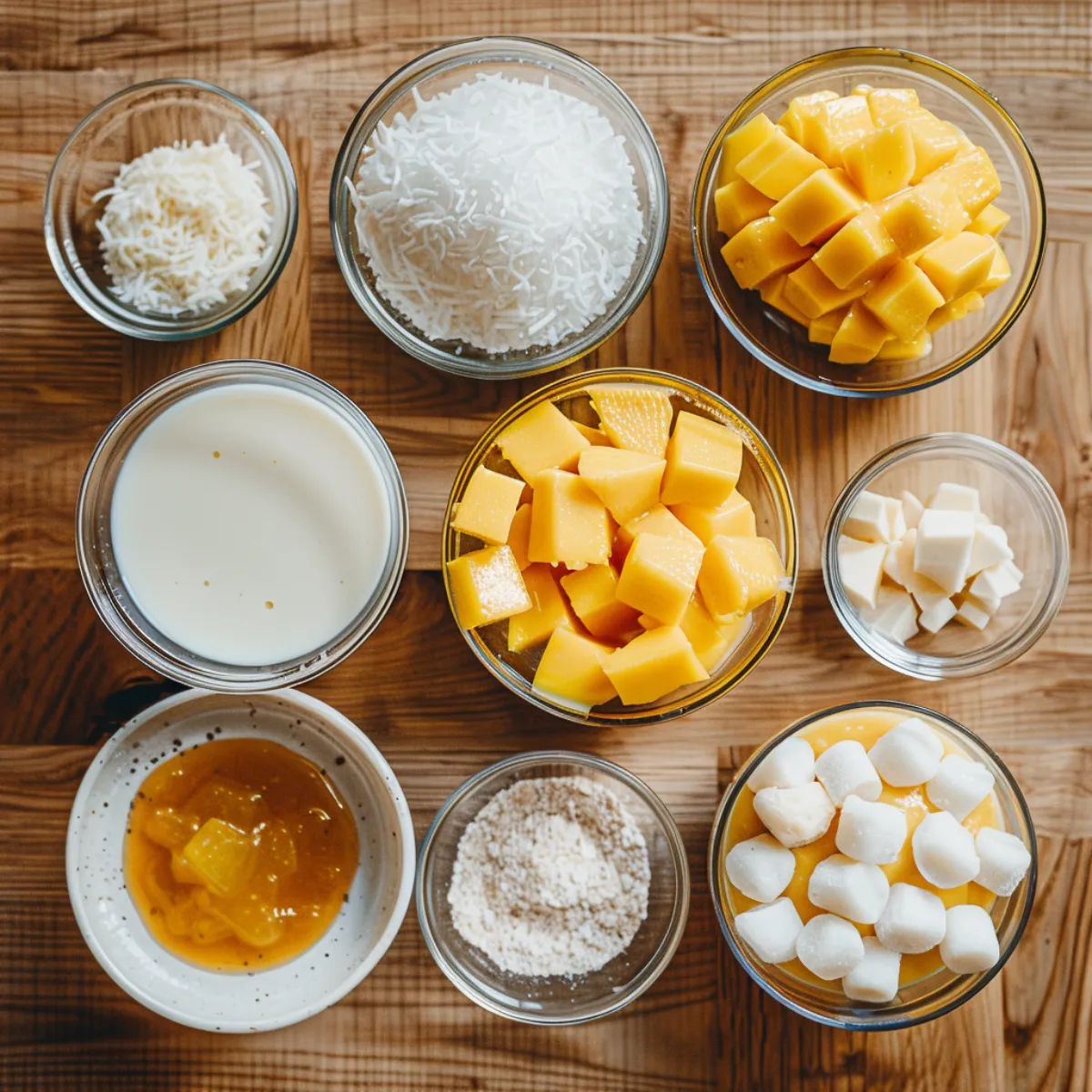
The star of the show? Fresh, ripe mango cubes—usually chilled or lightly macerated in syrup to enhance their natural sweetness. These aren’t just toppings; they’re juicy bursts of tropical flavor layered throughout the shaved ice.
Here’s a basic rundown of traditional ingredients you’ll find in mango bingsu:
| Ingredient | Purpose |
|---|---|
| Milk ice (or condensed milk ice) | Creamy, sweet base with snowy texture |
| Fresh mango cubes | Sweet, juicy fruit centerpiece |
| Mango syrup/puree | Enhances fruit flavor & adds moisture |
| Condensed milk | Adds rich sweetness and creamy texture |
| Mango ice cream or sorbet (optional) | Boosts mango flavor and indulgence |
| Toppings (e.g., mochi, jellies, coconut flakes) | Add crunch or chewiness |
Many modern cafés take it up a notch by layering the mango throughout the dessert, not just on top. Some add whipped cream, vanilla pudding, or mango popping boba for extra texture. Others infuse the milk ice with coconut or almond milk for dairy-free twists.
What Makes Mango Bingsu Different from Other Frozen Treats?
Let’s be honest—if you’re used to slushies or even Italian granita, mango bingsu hits completely different. Unlike icy, gritty textures, this dessert is cloud-like and airy thanks to ultra-fine milk ice. The texture literally melts in your mouth, making every bite smooth rather than crunchy or slushy.
Also, unlike traditional American frozen desserts loaded with artificial flavors, bingsu leans into real fruit and subtle sweetness. It’s the perfect cross between a fruit salad, ice cream, and shaved snow, offering complexity with each spoonful.
Compared to Japanese kakigori, which uses water-based ice and syrups, Korean bingsu usually features milk-based ice, giving it a creamier consistency. That’s why mango bingsu feels more like a dessert and less like a flavored ice snack.
In the next part, I’ll walk you through exactly how to make mango bingsu at home—whether you’ve got a machine or not. Trust me, it’s easier than you think and 100% worth it.
Step-by-Step Guide to Making Mango Bingsu at Home
Tools and Equipment You’ll Need
One of the best things about mango bingsu is that you don’t need a commercial kitchen to make it. While Korean cafés might use specialized ice shavers, you can absolutely recreate this magic at home with some creativity.
Here’s what I use in my own kitchen:
| Tool | Why You Need It |
|---|---|
| Ice shaver or blender | To get that fine, snow-like texture |
| Mixing bowls | For prepping mango and mix-ins |
| Freezer-safe containers | To freeze milk mixture in advance |
| Small scoop or spoon | For layering ingredients neatly |
| Serving bowl or cup | Bingsu is best served in a chilled bowl |
If you don’t own a bingsu machine (and let’s be honest, who does?), a high-powered blender or a manual ice shaver can do the trick. The key is to freeze milk or sweetened condensed milk in small cubes first, then blend it until it’s fluffy like snow.
Simple Homemade Mango Bingsu Recipe with Variations
Let me walk you through my personal homemade mango bingsu recipe—one I’ve tested and perfected in my small kitchen after returning from Seoul. It takes under 30 minutes (plus freezing time) and will blow your mind.
Ingredients:
- 1 cup whole milk
- 1/4 cup sweetened condensed milk (plus more for drizzling)
- 1 large ripe mango (cut into small cubes)
- 2 tablespoons mango syrup or puree (optional but delicious)
- Mango or vanilla ice cream (optional)
- Toppings: mochi, jelly cubes, coconut flakes (optional)
Instructions:
- Prepare the Ice Base:
Mix whole milk with sweetened condensed milk and pour into ice cube trays. Freeze for at least 6 hours or overnight. - Shave the Ice:
Once frozen, blend the milk cubes in a blender until fluffy and powdery. Don’t over-blend—it should look like snow, not slush. - Assemble:
In a chilled bowl, layer some of the shaved ice, then add a handful of mango cubes and a drizzle of mango syrup. Repeat the layers. - Top It Off:
Finish with more mango chunks, a drizzle of condensed milk, and a scoop of mango ice cream. Add toppings of your choice for texture. - Serve Immediately:
Mango bingsu melts quickly—dig in fast!
Want a flavor twist? Try adding a layer of matcha syrup or tapioca pearls for a boba-inspired version. You could also swap the mango for strawberries or lychee when you want to change things up.
The Cultural Origins of Bingsu
Is Bingsu Korean or Japanese? Let’s Clear That Up
This is one of the most common questions I get when I talk about mango bingsu—isn’t it just another version of Japanese kakigori? The answer is both simple and layered. While the two desserts share similarities, bingsu is deeply rooted in Korean culinary culture and has evolved uniquely within it.
Historically, bingsu (빙수) dates back to the Joseon Dynasty (1392–1897), where government officials would harvest ice from royal ice storage (called seokbinggo) and mix it with sweet red beans. This early version was called patbingsu, which still exists today. Over time, Korea’s take on shaved ice began to incorporate fruit, milk, and syrups as food culture modernized and diversified—especially after the Korean War and the rise of Western influence.
In contrast, kakigori in Japan also uses shaved ice, but it’s typically flavored with fruit syrups and doesn’t feature the milk-based snow that makes bingsu so creamy. Kakigori tends to be lighter and more water-like, whereas bingsu is rich and almost dessert-like in density.
So yes, bingsu is very much a Korean invention, even though regional similarities exist across East Asia. Mango bingsu is a modern spin that perfectly showcases Korea’s knack for turning tradition into trend.
How Bingsu Evolved into Its Fruity Forms Like Mango Bingsu
The classic version of bingsu is patbingsu, topped with red beans (pat), rice cakes, and condensed milk. But as Korea’s food scene exploded in the 2000s, dessert cafés began reinventing bingsu with globally loved fruits like mango, strawberries, and kiwi.
Mango bingsu entered the scene as South Korea became a tourism hub and started sourcing more tropical ingredients. It didn’t take long for the trend to catch fire—mango’s sweet acidity and bright color made it an instant favorite among both locals and travelers. You can now find it in trendy Seoul cafés, global Korean franchises like Sulbing, and even in fusion restaurants across the U.S.
I remember a conversation with a dessert shop owner in Hongdae who told me, “Mango bingsu brings people back every summer. It’s the dessert that sells itself.” He wasn’t wrong. It has all the traits of a modern classic—cool, customizable, and Instagram-worthy.
In the next part, we’ll break down the nutritional profile and calorie count of mango bingsu—because yes, we all want to know if this dreamy dessert can fit into a balanced lifestyle.
Nutritional Breakdown and Calorie Count
How Many Calories Are in Mango Bingsu?
Let’s face it—mango bingsu may look like a light dessert, but with all that creamy snow, sweet syrup, and mango toppings, calories can add up. So, how much are we really talking?
On average, one medium bowl of mango bingsu contains between 250 to 400 calories, depending on ingredients and portion size. Here’s a basic breakdown based on a standard serving:
| Ingredient | Estimated Calories |
|---|---|
| Milk-based shaved ice | 100–120 |
| Fresh mango (1/2 cup) | 50–60 |
| Condensed milk (2 tbsp) | 130 |
| Mango syrup or puree | 30–50 |
| Mango ice cream (optional) | 90–120 |
| Mochi/toppings (optional) | 50–70 |
So if you’re going with the works—including ice cream and chewy mochi—you might hit 400 calories. But a lighter version with just mango and shaved ice keeps it closer to 250.
Keep in mind: the portion sizes in Korea tend to be generous, meant for sharing. If you’re making it at home or ordering a personal size, your calorie intake may be much lower.
Can Mango Bingsu Be Part of a Healthy Dessert Plan?
Absolutely! When made with intention, mango bingsu can be one of the lightest and most refreshing desserts you enjoy all summer. Here are a few healthy tweaks I personally use when I want to enjoy it guilt-free:
- Use low-fat or plant-based milk (like almond or oat) for the shaved ice base.
- Skip the condensed milk or use a small drizzle to keep it light.
- Load up on fresh mango, and go easy on syrups.
- Add chia seeds or coconut flakes for texture without added sugar.
- Use natural mango puree instead of store-bought syrup.
It’s all about balance. I often think of mango bingsu as a “fruit-forward treat” rather than a sugary splurge. It satisfies a sweet craving while sneaking in a good dose of vitamin C, fiber, and hydration from mangoes and ice.
Next, we’ll explore how bingsu’s global popularity has sparked creative versions of the dessert all over the world—and how mango bingsu still leads the pack.
The Global Fusion of Bingsu Flavors
Unique Bingsu Flavors Around the World Inspired by Mango Bingsu
Ever since mango bingsu became a global hit, it’s inspired cafés and dessert lovers everywhere to put their own twist on this dreamy Korean treat. And honestly? I love seeing how this dessert evolves around the world—it reminds me of how food travels, adapts, and brings people together.

Let’s take a look at some bingsu variations I’ve come across or tried myself that are heavily influenced by the original mango version:
- Strawberry Bingsu – Often layered with strawberry jam, condensed milk, and fresh berries. It’s a close cousin of mango bingsu but with a more tart punch.
- Matcha Bingsu – A green tea twist that includes matcha-flavored ice or syrup and sweet red beans. Great for fans of earthy, bittersweet flavors.
- Chocolate Bingsu – Think shaved chocolate milk ice with brownies, cocoa syrup, and whipped cream. Decadent and rich, like a frozen chocolate cake.
- Tropical Bingsu – A fusion of mango, pineapple, and coconut, often drizzled with coconut cream. This one tastes like a beach vacation in a bowl.
- Lychee Bingsu – Light and floral, usually paired with jelly or rose syrup. Super refreshing on humid days.
These variations show how versatile bingsu is as a dessert platform—mango bingsu laid the foundation, and now chefs and home cooks are building on it creatively.
Regional Variations: Ube, Matcha, Chocolate and More
One of the most memorable bingsu experiences I had outside Korea was in a Filipino dessert bar in California. They served an ube bingsu made with purple yam-flavored milk ice, coconut jelly, and mango on top. It was vibrant, silky, and felt like a tropical spin-off of the original mango bingsu.
In Japan, I tried a black sesame kakigori-bingsu hybrid that added nutty depth to the mix. Meanwhile, in New York City, a Korean café was layering mango bingsu with cream cheese foam, giving it cheesecake vibes.
This international adoption and experimentation really excites me. It means mango bingsu is more than a trend—it’s become a template for creativity in cold desserts.
In the next section, I’ll take you on a little tour of where to find the best mango bingsu, even if you’re nowhere near Seoul.
Where to Find the Best Mango Bingsu (Even Outside Korea)
Popular Cafés and Dessert Spots That Serve Authentic Mango Bingsu
Even if you’re miles away from Korea, there’s a good chance you can get your hands on authentic mango bingsu—especially if you’re in a major city with a solid Korean food scene. Over the years, I’ve made it a mission to hunt down mango bingsu wherever I travel, and trust me, some spots are totally worth the trip.
Here are some standout places that consistently serve high-quality mango bingsu:
- Sulbing (South Korea and Global)
The most famous Korean dessert café chain. Their mango cheese bingsu is iconic—topped with cheesecake chunks and a mountain of sweet mango. - Café Bora (Los Angeles, USA)
While known for ube, they offer seasonal mango bingsu made with pure mango puree and coconut flakes. It’s a delicate, tropical spin. - Sweet Moment (New York City, USA)
This spot layers fluffy shaved milk ice with fresh mango and golden syrup, then tops it with mango ice cream. Instagrammable and delicious. - Snowfall (Toronto, Canada)
Known for its ultra-fine Korean milk ice and generous mango servings, this café’s mango bingsu is a summer go-to. - The Bingsu (Melbourne, Australia)
A Korean-Australian fusion dessert shop that keeps it traditional with condensed milk, real fruit, and bold presentation.
If you’re lucky enough to visit Korea, Insadong, Hongdae, and Gangnam are filled with cafés serving mango bingsu, each with their own twist—some add cheese foam, others mochi, and a few even torch the top like crème brûlée!
What to Look for When Ordering Mango Bingsu Abroad
Not all mango bingsu is created equal, so here are my tips for spotting the real deal:
- Check the base: Authentic bingsu uses milk-based shaved ice, not water ice or ice cream scoops.
- Look at the mango: It should be fresh, vibrant, and juicy, not canned or syrupy mush.
- Presentation matters: Bingsu is known for its tall, elegant snow-like structure—if it looks flat, it’s probably just a fancy fruit bowl.
- Extras are a bonus: Ice cream, whipped cream, or mochi add texture, but shouldn’t overpower the mango flavor.
If you’re unsure, ask your server how it’s made. If they mention a “milk snow” or “condensed milk base,” you’re in for a treat.
Creative Toppings and Pairings
Topping Ideas to Elevate Your Mango Bingsu Experience
One of the most exciting parts of making or ordering mango bingsu is the ability to customize it to your heart’s content. Sure, the classic version with fresh mango and condensed milk is amazing—but why stop there?
Here are some of my favorite toppings that add both texture and flavor without overpowering that mango magic:
- Mango Popping Boba: Bursting with juice, these pearls add a fun, chewy pop.
- Mochi Pieces: Soft and slightly chewy, mochi balances the icy texture beautifully.
- Coconut Flakes: Toasted or raw, they bring in tropical vibes and a nutty touch.
- Cheesecake Bites: Add creamy richness that pairs surprisingly well with mango.
- Almond or Cashew Crumbs: For a light crunch without the heaviness of granola.
- Mint Leaves or Basil: A pop of green that freshens every spoonful.
- Chia Seeds or Basil Seeds: For a nutrition boost and unique texture.
The trick is to keep it balanced. You want the mango to stay center stage while the toppings play supporting roles. I usually limit it to 2–3 toppings max so the dish doesn’t get too busy.
What Drinks and Snacks Pair Best with Mango Bingsu?
Because mango bingsu is cold, creamy, and sweet, it pairs beautifully with drinks and light bites that refresh the palate or contrast in texture.
Here are my go-to pairings:
| Drink | Why It Works |
|---|---|
| Iced Matcha Latte | Bitter notes balance out the sweetness |
| Jasmine or Green Tea | Light and floral, they cleanse the palate |
| Sparkling Lemon Water | Cuts through richness with tartness |
| Coconut Water | Complements tropical flavors without added sugar |
For snacks or small bites:
- Savory Korean pancakes (pajeon) – for that hot/cold contrast
- Butter cookies or biscuit sticks – to scoop or dip
- Crispy seaweed snacks – don’t knock it till you try it
Once, at a café in Seoul, I had mango bingsu served alongside a tiny bowl of kimchi chips. Sounds wild, right? But the spicy-salty kick was the perfect foil to the icy sweetness of the dessert.
Next, let’s answer the most popular questions people ask about mango bingsu in a handy FAQ format.
Frequently Asked Questions About Mango Bingsu
What is in mango bingsoo?
Mango bingsoo is a Korean dessert made of finely shaved milk ice, topped generously with fresh mango chunks, condensed milk, and often mango syrup or mango puree. Many variations also include a scoop of mango ice cream, chewy mochi pieces, or crispy toppings like coconut flakes. The result is a cool, creamy, fruity treat that’s both refreshing and indulgent.
What is bingsu made of?
At its core, bingsu (also spelled “bingsoo”) is made of shaved ice, traditionally topped with sweet ingredients. The modern version often uses milk-based ice instead of plain water ice, giving it a creamier, snow-like texture. Common ingredients include:
Condensed milk
Sweetened red beans (in patbingsu)
Fresh fruits (like mango, strawberries, or kiwi)
Toppings like mochi, cereal, or nuts
Ice cream or whipped cream for extra indulgence
Mango bingsu is a fruity variation that replaces traditional red beans with sweet tropical mangoes.
How many calories are in mango bingsu?
A standard bowl of mango bingsu typically ranges from 250 to 400 calories, depending on the portion size and toppings. Here’s a basic breakdown:
Milk ice base: ~100–120 calories
Fresh mango (½ cup): ~50–60 calories
Condensed milk drizzle: ~130 calories
Mango syrup or puree: ~30–50 calories
Mango ice cream (optional): ~90–120 calories
Extra toppings: ~50–70 calories
Making it at home allows you to adjust the sweetness and keep it on the lighter side if you want a more health-conscious version.
Is bingsu Korean or Japanese?
Bingsu is Korean. While it’s sometimes confused with Japanese kakigori, which also features shaved ice, bingsu has distinct differences. Korean bingsu uses milk-based shaved ice and includes toppings like sweet red beans, mochi, and condensed milk. In contrast, Japanese kakigori is typically made with water-based ice and fruit-flavored syrups.
Historically, bingsu dates back to the Joseon Dynasty in Korea and has evolved into modern fruity forms like mango bingsu. So while both desserts are icy and sweet, bingsu is uniquely Korean in origin and style.
Conclusion: A Tropical Korean Dessert You’ll Crave All Year Long
Mango bingsu isn’t just a dessert—it’s a full-on summer experience in a bowl. From its creamy, snow-like texture to its sweet mango flavor and endless topping options, it’s easy to see why it’s become a global phenomenon. Whether you’re trying it in Seoul or blending it up at home, this Korean classic never fails to deliver a perfect bite of icy indulgence.
From discovering bingsu in a hidden café in Seoul to experimenting in my own kitchen, I’ve learned that food can be both a memory and a moment. And mango bingsu? It’s one of those rare treats that captures both.
Discover more creative dessert ideas like these in our recipe hub: recipes
Let’s stay connected! Follow me for more inspirations on Pinterest: Heartly Recipes Pinterest
And join the conversation on Facebook: Heartly Recipes Facebook
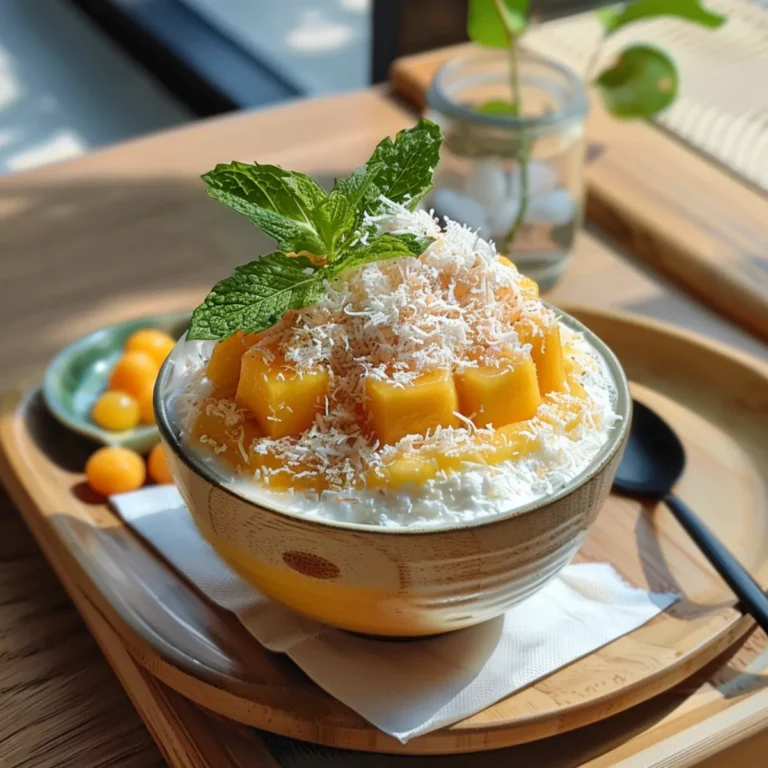
Mango Bingsu: The Best Tropical Korean Dessert to Cool Down Your Summer
Mango bingsu is Korea’s answer to beating the summer heat—an ultra-light, creamy shaved ice dessert topped with juicy mangoes, condensed milk, and often a scoop of mango ice cream. It’s the perfect tropical indulgence that’s as refreshing as it is addictive.
- Total Time: 10 minutes (plus freezing time)
- Yield: 2 servings
Ingredients
- 1 cup whole milk
- 1/4 cup sweetened condensed milk (plus more for drizzling)
- 1 large ripe mango, cut into small cubes
- 2 tablespoons mango syrup or puree (optional)
- Mango or vanilla ice cream (optional)
- Toppings: mochi, jelly cubes, coconut flakes (optional)
Instructions
- Mix whole milk with sweetened condensed milk and pour into ice cube trays. Freeze for at least 6 hours or overnight.
- Blend the frozen milk cubes in a high-powered blender until fluffy and snow-like. Avoid over-blending.
- In a chilled bowl, layer the shaved ice, mango cubes, and drizzle of mango syrup. Repeat if desired.
- Top with more mango, a drizzle of condensed milk, and a scoop of ice cream. Add chosen toppings.
- Serve immediately and enjoy before it melts!
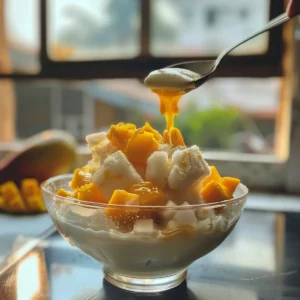
Notes
Swap mango for other fruits like strawberry or lychee for fun variations. Try almond or oat milk for a lighter, dairy-free twist.
- Prep Time: 10 minutes
- Cook Time: 0 minutes
- Category: Dessert
- Method: No Cook
- Cuisine: Korean
Nutrition
- Serving Size: 1 bowl
- Calories: 300
- Sugar: 28g
- Sodium: 80mg
- Fat: 8g
- Saturated Fat: 5g
- Unsaturated Fat: 2g
- Trans Fat: 0g
- Carbohydrates: 50g
- Fiber: 2g
- Protein: 5g
- Cholesterol: 20mg
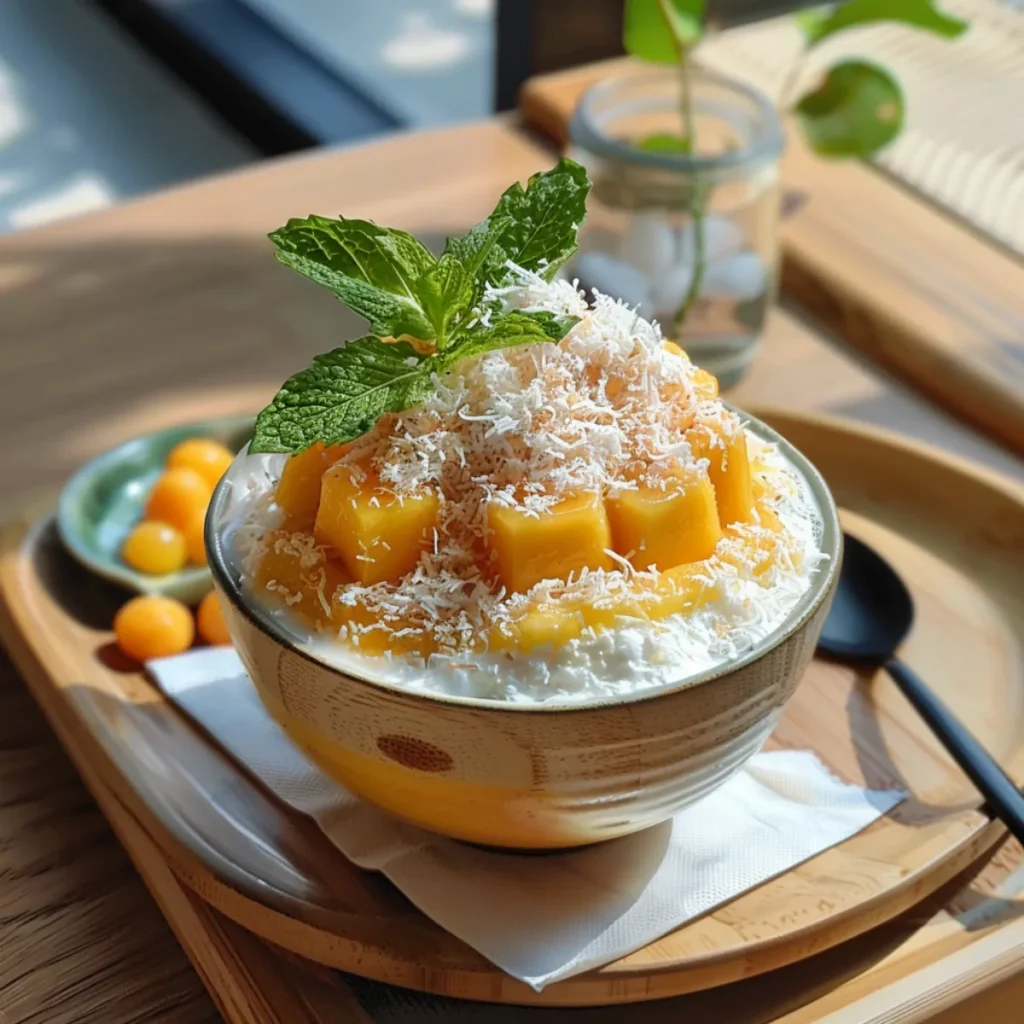

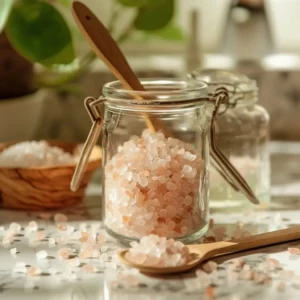
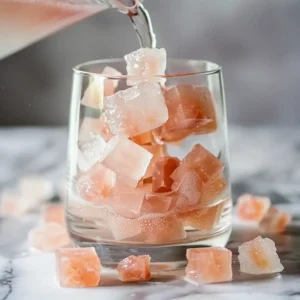




3 thoughts on “Mango Bingsu: The Best Tropical Korean Dessert to Cool Down Your Summer”